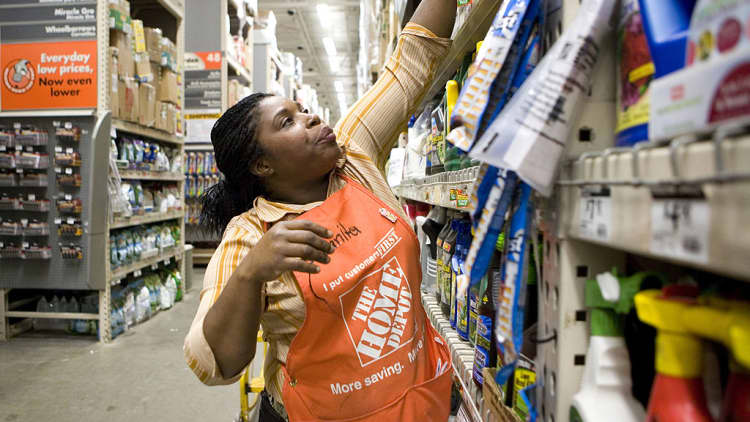
Nonfarm payrolls grew by 156,000 jobs in December a number that missed expectations but was overshadowed by a sharp gain in wages.
Headline unemployment edged higher to 4.7 percent, according to a report Friday from the Bureau of Labor Statistics. Economists had been expecting payrolls growth of 178,000. A broader measure of unemployment that counts discouraged workers and those working part-time for economic reasons edged to 9.2 percent, a fresh 2016 low and the best since April 2008.
The big story of the report, though, may be a sharp gain in earnings. Average hourly wages jumped 10 cents to $26, representing a 2.9 percent annualized gain. That comes a month after wages showed a modest decline. The average work week was unchanged at 34.3 hours.
"The most important thing is the growth in average hourly earnings, the best since 2009," said Scott Clemons, chief investment strategist at Brown Brothers Harriman. "It provides further evidence — I actually think the final piece of evidence — the Fed needs to conclude the labor market has recovered, mission accomplished, giving them the green light to accelerate interest rate increases."
The total brought 2016 job gains to 2.2 million, a decline of about half a million from the previous year.
Health care led the way with 43,000 new jobs while bars and restaurants added 30,000. Social assistance grew by 20,000, transportation and warehousing added 15,000 and financial services saw a gain of 13,000. Manufacturing, a weak point throughout the year, actually saw 15,000 new jobs, the same total as business and professional services.
At the same time, the declining work force also stood out. Those counted outside the labor force increased to 95.1 million. The labor force participation rate nudged higher to 62.7 percent, though still near the lowest level since the late 1970s.
The final report of 2016 also comes as the U.S. prepares for what could be a significant shift ahead. President-elect Donald Trump has promised aggressive fiscal measures including tax cuts and higher domestic spending to pull the economy out of the steady but below-trend gains it has seen during Barack Obama's eight years as president.
"The new administration has talked about some policies that could fuel business growth," said Tony Bedikian, managing director and head of global markets at Citizens Bank. "We'll have to wait and see, but we're starting the new year on very solid economic footing."
The jobs report is a key component for central bank policymakers. The Fed in December enacted its first interest rate hike in a year and is expected to increase as many as three times in 2017.
Revisions for previous months showed November's total increasing from the initially reported 178,000 to 204,000 but October's total brought down from 142,000 to 135,000.
Correction: Tony Bedikian's name was misspelled in an earlier version.


